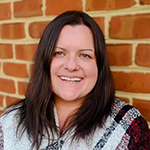
Where is it most difficult to access healthy food in South Carolina?
It’s an important question. More than half a million South Carolinians experience food insecurity. National data shows that those impacted the most are Black, Latino or from Indigenous, low-income and rural communities. South Carolina ranks fifth in the nation for the highest rate of food insecurity and is first in the category of very low food security.
As one way to track the answer, Food is Medicine South Carolina is developing a map to better identify areas where people disproportionately experience a lack of access to food.
Connecting food and health care
Food is Medicine SC — whose founding can be traced to the results of a 2018 survey conducted as a part of USC’s SNAP-Ed Implementing Agency — brings together representatives from diverse sectors to strengthen coordination among organizations working at the intersection of health care and healthy food access.
As part of that 2018 survey, approximately 2,000 South Carolinians who receive SNAP were asked where they visited on a regular basis. More than 50 percent said a doctor’s office or health clinic.
“That was a big reason why we wanted to prioritize that type of setting,” says Carrie Draper, a senior research associate at the Arnold School of Public Health’s Department of Health Promotion, Education and Behavior. The ensuing focus on SNAP-Ed work within health care locations ultimately led to mobilizing partners to create Food is Medicine SC.
Draper is the principal investigator for a Food is Medicine Landscape Assessment report, which includes co-investigators Elizabeth Adams and Caroline Rudisill, also from the Arnold School of Public Health. It was presented at an all-day annual meeting in December to understand where Food is Medicine interventions are taking place and what is needed to scale and sustain the work statewide.

“How can we address that so inequities don’t grow even wider?”
Partnerships between health care organizations and food access providers are expanding nationwide, and South Carolina is a leading state in that movement. Since it began here in 2021, South Carolina is among 16 states with a Food is Medicine initiative.
“The group started with eight members at its first meeting, and today includes more than 100 members across the state,” says Amy Weaver, an Arnold School research associate who is a team leader with the Food is Medicine SC initiative. Members in turn make presentations for local, state and national audiences through associations and conferences.
Draper’s involvement at USC in addressing the state’s food insecurity issues dates to 2011. She is also one of the founders of FoodShare South Carolina, a USC program that continues to work to expand access to fresh produce and nutrition education for families living on a low income.
She says the awareness that was raised in the years prior to the COVID-19 pandemic became heightened during the shutdowns, and it led people in the health care sector to increasingly see the role they could play to address food access issues.
Expanding to prevent inequities
Key priorities for Food is Medicine SC are gaining more equitable access to screenings, referrals and produce prescription programs for patients. The key will be bringing together health care providers, food-based organizations and other entities interested in developing and enhancing these efforts.
“It’s happening, but it’s still not widespread. And it’s still not close to 100 percent,” Draper says.
Another priority is to expand services into rural areas. For those in regions where there is low food access, local agriculture can tie in South Carolina-grown produce to deliver produce prescriptions to health care providers. But that still requires a coordination of efforts from overworked rural health care providers.
“They’re so very short-staffed, they still don’t have the resources,” Draper says. “Even taking a survey is taxing on them.”
Another challenge in rural areas is transportation access, which can limit where expansion is happening.
“How can we address that so inequities don’t grow even wider?” Draper says.
Now, the committee will next work on further developing partnerships with those who are eager to support food is medicine strategies. Their Food is Medicine SC website will keep the public informed of future meetings and goals.
Ultimately, the desire is to see policy changes where Food is Medicine-type work is streamlined within the health care system.
“We were mindful about doing the interviews and understanding who the players are, what’s happening, and where are there opportunities for this to really expand,” Weaver says of the work that went into the landscape assessment.
“There are health care organizations that are doing this and doing it well and have things that we can learn from and share with others, as model practices,” she says.